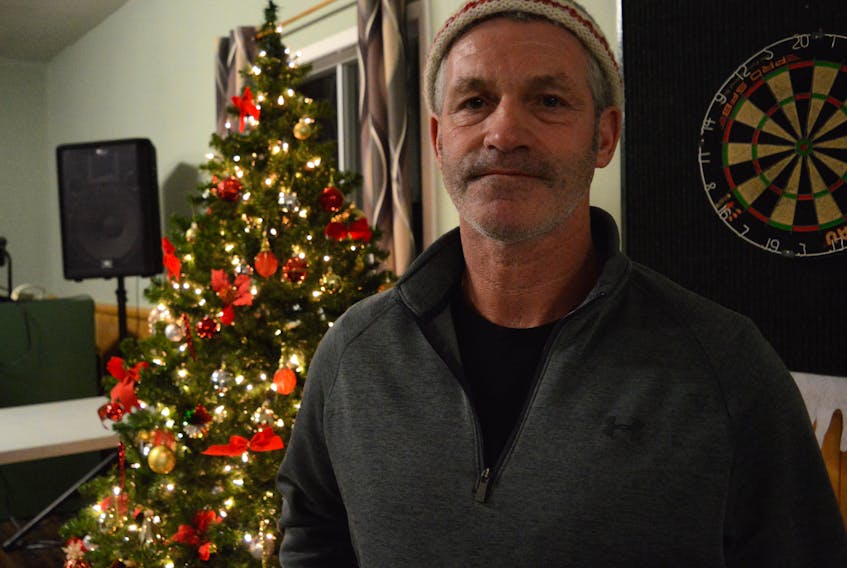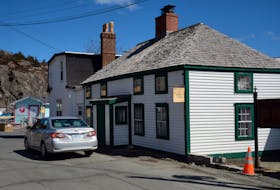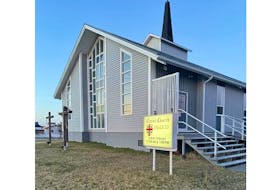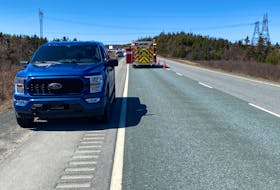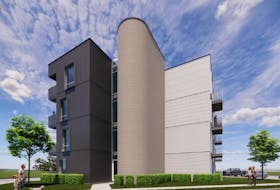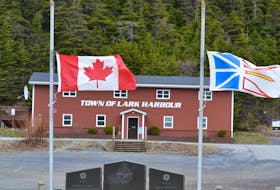On Monday, Dec. 10, Dr. Daniel Hewitt was in New World Island with a new presentation to continue his investigations into the region’s water quality.
The communities of Bridgeport, Moreton’s Harbour and Valley Pond have a long history of arsenic in private water wells throughout the area. The issue is particularly of concern in Moreton’s Harbour, where traces of arsenic are most prominent.
Hewitt presented results from a recent survey related to arsenic at the area’s Kinsmen Club. The survey was administered to residents from Bridgeport, Valley Pond and Moreton’s Harbour, as well as residents of Codroy Valley on the west coast and in Gander Bay.
The survey looked at people’s understanding of the harms of arsenic, its presence in each area, how to get wells tested and if communities are aware of these issues.
With this survey work completed, Hewitt told the over 30 people in attendance at the session he is hoping to create an updated information pamphlet on arsenic well water and to work with Service NL to ease some issues around getting wells tested.
“Once we get input from these community meetings, we’re going to ask Department of Municipal Affairs and Environment if we can use Service NL as a receptor of arsenic and make a deal with a testing lab to reduce the costs,” Hewitt said. “Because of the nature of this issue it hits rural areas, and unfortunately rural areas are often not the top priority no matter what.
“I think this community has made a good pitch for saying this is important to us, but these areas have to work hard to try and make people pay attention.”
Because of Hewitt’s work and the past efforts of residents in the area, the New World Island survey results showed significantly higher awareness around arsenic issues than in Gander Bay or Codroy Valley.
For example, when asked if residents are aware of an arsenic problem in the area, the New World Island responses shown that 80 per cent were aware of the potential dangers of arsenic in their water, while only 35 per cent said they were aware in Gander Bay.
The results were also presented in Codroy Valley by Dr. Wendy Graham.

Arsenic awareness
Hewitt was formerly the area’s physician, working out of the New World Island Health Clinic in Summerford until he left in 2015. It was around this time he began investigating arsenic in well water, particularly in Moreton’s Harbour where the traces of arsenic are high and frequent.
In 2014 Hewitt did initial tests on 12 wells in Moreton’s Harbour and Valley Pond. The two dug wells tested had arsenic traces that were below 10 parts per billion (ppb), 10 ppb being the maximum accepted concentration for arsenic in drinking water, according to Health Canada.
But nine of the 10 drilled wells tested positive for arsenic traces above 10 ppb, ranging from 16 to 207 ppb.
With this showing signs for concern, the following year residents of Moreton’s Harbour and the neighbouring communities of Valley Pond and Bridgeport had their own tests conducted. Particularly in Moreton’s Harbour, the results showed a strong presence of arsenic in the wells of the community. Out of 22 wells, 20 had an arsenic concentration above 10 ppb. One well tested had an extremely high concentration of 1,130 ppb.
“This may be one of the worst areas in the province for arsenic, but my fear is that there are other communities yet to be discovered,” said Hewitt.
In the Department of Municipal Affairs and Environment’s report on arsenic, cancer is listed as the primary health concern from exposure to arsenic. It also lists other health effects such as causing an abnormal heart beat, poor blood production and diarrhea. Hewitt noted that lung, bladder and skin cancer are particularly linked to arsenic intake, as well as its negative impacts on kidney and liver function.
The survey results showed the strongest awareness around arsenic issues was in the New World Island area, and Hewitt says their work has resonated in other nearby communities as well.
“Because you’ve had an interest you’ve had a good effect on the surrounding area,” Hewitt told attendees during the presentation. “In the north side of Lewisporte they don’t have the town water supply and because they knew of the willingness here to get their water checked, people out there had their drilled wells tested and some did have traces of arsenic.”
Seeking solutions
Dr. Cynthia Coles is an associate professor with Memorial University’s Faculty of Engineering and Applied Science. She spent the summers of 2017 and 2018 in Moreton’s Harbour testing the arsenic levels of various wells and potential solutions for cleaning the water. Using a combination of filters and reverse osmosis, she tested a small-scale system on four different wells.
“Two of them worked and two didn’t,” Coles said. “There are so many different properties of the water that have to be taken into account for it to work.
“To try and give everyone a household system is not very much of a long-term solution. I don’t think it’s very sustainable compared to a community system.”
Hewitt also expressed that the diverse range of arsenic levels across the area makes it difficult to implement a filtration system that would work in every household.
“Reverse osmosis does not work with water with higher levels of arsenic. It will take some of the arsenic out of the water, but not all,” said Hewitt. “The artesian well at the Kinsmen Club does not have a high concentration of arsenic and reverse osmosis may work fine, but down the road the concentrations are very high. Just a stone’s throw to your neighbour’s property and things could change.”
With this in mind, the Kinsmen Club is working in partnership with Coles for a potential community water supply, likely located at the club’s location in Valley Pond.
Local Kinsmen president and Moreton’s Harbour resident Winston Dearing says the club recently met with the chair members for each local service district and asked them to bring the proposal to their communities. A subsequent meeting will occur in January to see if there is enough community support to move the project forward.
“If there’s any money to come from government, it’s better to have full support of the community. They don’t want to be seen that they’re doing this for just a select group,” Dearing said. “If there is enough support we’re going to do a big more digging into exact costs for funding, maintenance, etc.”
But one major area of contention is that many residents of Moreton’s Harbour, Bridgeport and Valley Pond have installed their own filtration systems for their home wells. Dearing says many people are worried about the costs and practicality of a facility because of the personal investments many have already made with their own water.
However, Coles hopes the community will see a community water supply as the most viable option.
“In a larger scale system you can do a lot more for people. To have one dedicated system will be much less work overall than having separate systems for each individual well,” she said. “It doesn’t affect anyone adversely, people should want their neighbours to have clean water.”
According to Dearing and Cole, the installation of this system is expected to cost around $30,000, with a 90/10 cost share between the federal government and the communities of Moreton’s Harbour, Bridgeport and Valley Pond.
Dearing does not have a filtration system for his home well. While he may install a system in the future, he is awaiting to see what may come of a proposed community well first.
“We’ve had sickness and cancer in this community, but no one here knows for sure what’s the cause of it,” Dearing said. “But when they’re telling you if you’ve got high levels of arsenic you shouldn’t be taking too many hot showers, it certainly gets people thinking.”
In an emailed response, the Department of Municipal Affairs and Environment says the testing, care and maintenance of private drinking water wells is the responsibility of well owners, and well owners are encouraged to get their water tested by an accredited laboratory at least once a year.
Arsenic levels
In 2014-15 residents of Moreton’s Harbour, Valley Pond and Bridgeport had their home water wells tested for arsenic.
An arsenic concentration of 10 parts per billion (ppb) is the maximum accepted concentration of arsenic suitable for drinking water, according to Health Canada’s Guidelines for Canadian Drinking Water Quality.
• Moreton’s Harbour: Twenty-two wells were tested, 20 tested positive for arsenic concentrations above 10 ppb. The average concentration was 280 ppb, and the highest concentration was a very high level of 1,130 ppb.
• Valley Pond: Nine wells were tested, five tested positive for arsenic concentrations above 10 ppb, the highest concentration found was 232 ppb.
• Bridgeport: Twelve wells were tested, only four had arsenic concentrations higher than 10 ppb. The highest concentration of arsenic found in Bridgeport was 28 ppb.

